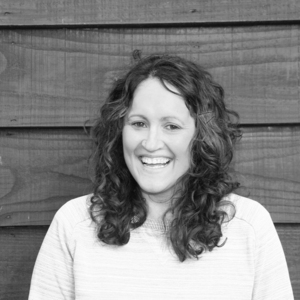Insights
INSIGHTS
All Topics
How to get older people to volunteer
26 Nov 2024by Kellie Smith
We look at the benefits of recruiting older volunteers and how to get them involved
The UK’s population is ageing. One in four people will be over 65 by 2050, according to the Office for National Statistics. But volunteering in this age group has dropped. This article will explore how charities can encourage older people to volunteer and support their work – from removing barriers to volunteering to providing flexible volunteering opportunities.
The Centre for Ageing Better says the fact people are living longer is something to celebrate, but older people are missing out on the diverse benefits of volunteering. The charity carried out a review of volunteering in later life that shows it helps to improve a person’s social connections and increases their sense of purpose and self-esteem. Local communities also benefit from the experience and knowledge of older volunteers.
There are also advantages for charities of having older volunteers. Research from the Minnesota Association for Volunteer Administration says that older volunteers are “very reliable”, “have useful skills” and “life experience”, and “are willing to do what is needed”.
Listen to service users
The Centre for Ageing Better says it’s important to listen to perspective volunteers to find out how they can be involved with your charity’s work.
Everyone has different life circumstances which can affect how they get involved in volunteering. Once people become volunteers, you should keep in regular touch with them, so they can let you know if their circumstances have changed.
Promote the benefits of volunteering
Let older people know the “value and benefits” of volunteering in your communications. NICE guidance says “volunteering is “an enjoyable experience”, an “opportunity to socialise” and meet others, and a chance to use skills, experience and knowledge to help others.
Make sure you include these important messages on your website, in your volunteer leaflets and on social media.
Be inclusive
The Minnesota Association for Volunteer Administration says you need to make sure your volunteer recruitment is inclusive.
This includes using different types of communication channels to share recruitment information with prospective volunteers.
For example, publishing information on your charity’s website, advertising on radio and sharing information in community newsletters.
The toolkit also shares advice on making sure your communication materials use inclusive language. For example, making it clear that volunteers don’t need to have a degree or a diploma.
Everyone has different interests and motivations for volunteering. Some people, for example, will volunteer to make social connections. So, you need to make sure your communication materials appeal to everyone’s interests by highlighting the different reasons for volunteering.
The Centre for Ageing Better says that some people “will not see their contributions as volunteering”. To get around this, you may want to use terms like “helping out” or “giving time” in your communications rather than the word “volunteering”.
Be flexible
Give people the chance to volunteer by adapting your volunteering. NICE guidance says you could change “the length and times of volunteering sessions” to suit people’s different needs.
Think about whether you can offer home-based volunteering for people who are less mobile or have a medical condition that stops them from leaving their home. For example, charities which run telephone befriending services could benefit from promoting their volunteering opportunities to older people.
You may also want to think about offering tasks and activities that people can do as and when they have time, because people may not want to commit to formal long-term volunteering.
The Centre for Ageing Better says charities should support volunteers “to be co-creators” to help design the tasks they want to take part in.
Provide reassurance to families
Family members of older volunteers may worry about their loved ones. To help reassure everyone, make sure you give older volunteers the training and information they need to do their roles safely.
Get feedback from existing older volunteers
Consider setting up a small group of existing older volunteers to get their views on your recruitment campaigns and how you could improve them. Finding out their reasons for volunteering could help you to recruit other older people.
Work with employers
Try approaching different companies to see if they would be willing to share information about your charity with staff who are close to retirement. Community Impact Bucks says it’s a good way for employers to prepare their employees for retirement. You may be able to offer people the chance to use the skills they’ve developed during their working life.
Remove barriers
There are emotional barriers to volunteering that mostly affect older people. This includes concerns about being rejected, ageism and not being made welcome or valued.
There are also physical barriers to volunteering, including the cost of taking part and accessibility.
The Centre for Ageing Better and the Department for Culture, Media and Sport found that the biggest barriers for taking part in volunteering are health, income and ethnicity, rather than someone’s age.
They say that while the population is getting older, it is also becoming more ethnically diverse and more people are developing health conditions. So, this means more older people are prevented from volunteering.
Charities can help to remove these barriers by providing emotional, physical and practical support to prospective volunteers. This includes making the induction process straight forward and keeping in regular touch with volunteers to check they are okay.
Kellie Smith
More on this topic
Recommended Products
Featured Products
Related Videos
Our Events
Charity Digital Academy
Our courses aim, in just three hours, to enhance soft skills and hard skills, boost your knowledge of finance and artificial intelligence, and supercharge your digital capabilities. Check out some of the incredible options by clicking here.




















